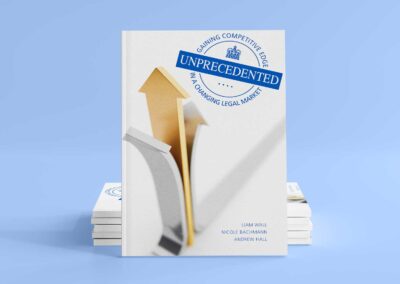Some people collect stamps or antiques or trivia or merchandise of their favourite sports club – I collect Competency Framework of organisations.
Why, I hear you ask?
Well, I’m passionate about Leadership (feel free to call me a geek) – and especially the continuous shifts and changes that it undergoes – HAS to undergo – over time. If you observe the various frameworks of Competencies, Principles, Values, Leadership behaviours etc (isn’t it amazing how even the names change continuously?), you can get a good feel for how the focus of leadership changes.
Sometimes the shift is very subtle and gradual, sometimes it is more marked – rarely it is seismic (like for instance the challenge of autocratic leadership at Runnymede that lead to King John signing the Magna Carta, which (eventually) changed the basis of political leadership in England for quite some time).
I’m less concerned (at least for the purpose of this article) with political leadership, however and even less with the past. Rather, I am interested in thinking about leadership in business in the 21st Century and the changes we are seeing and, with that, maybe inspire you to think about it too.
Why would you want to? Because it is becoming clearer and clearer that the good old ‘leading from the front’ model is no longer serving businesses looking for competitive edge in the 21st Century’s economic and business environment. And unless you think about which different model (or, more probably, models) will replace it and what you need to do differently to apply such models, you might end up a dinosaur…and where will that get you?
So, what are we noticing with the companies we work with, as we look at the development of the Frameworks of values, principles, competencies, etc, they are reviewing and renewing?
Firstly, the fact that companies ARE renewing them. Doing so takes investment of time, resources and communication and boards wouldn’t make that investment, if they didn’t see the need for it. Especially in challenging economic circumstances.
Secondly, a subtle shift in language, moving from productivity, efficiency, facilitating change and focus on results to trust, customer focus, relationships and teamwork, effectiveness and open communication.
What are we learning? Are businesses no longer interested in productivity, efficiency, focus on results and facilitating change? Obviously they are and any business that wants to be around for the mid to long term would certainly ignore those factors at their peril.
However, they are just the base line. It is a given that any business leadership team can get their heads around them and get the business to perform at the level necessary, purely to stay in business.
However, this is not enough to move the business forward into the future. Initiative, courage, innovation and an engaged workforce are needed to achieve that. And they are fostered in a different environment.
To create that environment, the company needs to shift their leadership style from ‘leading from the front’ – where a leader might, with time, actually get in the way of progress, stopping those who could (and would like to) overtake them – to ‘enabling and engaging 360 degrees’.
Let’s have a look at the two approaches, the way we understand them, for the purpose of this article.
‘Leading from the front’ most of us of a certain longevity in the leadership field are every familiar with: it is usually based on experience, broader and deeper technical knowledge than your followers and ‘not asking anyone to do what you can’t/wouldn’t do yourself’. The leader is the go-to expert, who still has the answers, once everyone else has run out of them, and expects that his/her directions are followed – maybe after having been challenged. We expect the leader to participate and show us how it is done, and we expect them to be the ultimate judge of the situation and the way forward.
In ‘enabling and engaging 360 degrees’, the leader is no longer required to have all – or even any – of the answers. Instead they are required to facilitate the knowledge, experience and skills of their workforce. They are required to create an environment, where people can motivate themselves to take responsibility, move forward, innovate and solve problems independently and proactively. To trust their people to come up with the answers, divest themselves of their authority to their people to enable them to make decisions and move the company forward towards its growth strategy. The leader is also required to request a similar style of leadership from their leaders, challenge upwards robustly and coach their leaders to adapt swiftly.
So, back to our assertion that the latter is a more effective style to master the leadership challenges of the 21 Century. – Don’t believe me? To evaluate it, have a look at the video at this link https://youtu.be/uqZiIO0YI7Y
Having watched the video, which of the two approaches do YOU consider to be more effective in the environment described – as this IS the environment we find ourselves in, whether we are aware of that fact or not?
In the time between me writing this article and you reading it, our environment has of course shifted again already – and will continue to do so, if we believe what the data is showing us…
So, can there actually be one leadership approach that allows us to cope with – let alone master – the challenges and opportunities in this constantly shifting world of ours?
We argue that ‘enabling and engaging 360 degrees’ can be that approach – for now – as it allows the learning (whether as challenge or suggestions) to come from any angle or source. This becomes an effective tool in preventing unnecessary redundancy of the systems, processes, technology and structures that continue to be deployed effectively within the business. That continuous challenge is also the life blood of ongoing small corrections and adjustments, re-evaluation of direction, vision and values (principles, behaviours, competencies…).
What are your experiences within your own organisation? What are your challenges with your current and future leadership approach? What capabilities do you need in your leadership, both executive and front line, now and in the future? How do you know? What do you need to do to find out? Maybe some enabling and engaging 360 degrees?


